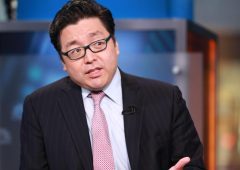Top U.S. Banks Expect Another Rate Cut by the End of the Year
17.10.2024 9:00 1 min. read Alexander Zdravkov
Analysts from two of the largest U.S. banks foresee an imminent interest rate cut from the Federal Reserve.
Following a 50 basis point reduction last month, the Fed is expected to adopt a more measured strategy, with projections for a 25 basis point cut in November.
JPMorgan Chase and Bank of America attribute this forecast to recent signs of economic resilience, including a notable increase of 254,000 in nonfarm employment for September.
Michael Feroli, chief economist at JPMorgan, believes the robust labor market will facilitate the Fed’s decision-making process, suggesting a gradual normalization of rates unless unexpected data emerges in the upcoming jobs report.
BofA’s Aditya Bhave stated that a further 50 basis point cut seems excessive given the strong labor statistics. This sentiment is echoed by New York Fed President John Williams, who considers the U.S. economy well-suited for a soft landing, highlighting the positive trends in employment and declining inflation.
The Bureau of Labor Statistics recently reported a 2.4% rise in the Consumer Price Index over the past year, the smallest gain since February 2021. While Williams supported the September rate cut, he sees the Fed’s dot plot as a reliable guide for future cuts, indicating potential 25 basis point reductions in November and December.
-
1
Billionaire Slams Meme Stock Hype and Sounds Alarm on U.S. Fiscal Health
15.06.2025 18:00 2 min. read -
2
Robert Kiyosaki Predicts 2025 “Super-Crash,” Urges Hoarding Gold, Silver, and Bitcoin
23.06.2025 13:31 2 min. read -
3
Nassim Taleb Says Global Trust Is Shifting from the Dollar to Gold
22.06.2025 17:00 1 min. read -
4
Billionaire Investor Sees Dollar Crash If Key Support Breaks
18.06.2025 15:00 1 min. read -
5
Geopolitical Shockwaves Hit Ethereum Hard While Bitcoin Stays Resilient
22.06.2025 16:21 1 min. read
Key U.S. Events to Watch This Week That Could Impact Crypto
The first week of July brings several important developments in the United States that could influence both traditional markets and the cryptocurrency sector.
Here Is How Your Crypto Portfolio Should Look Like According to Investment Manager
Ric Edelman, one of the most influential voices in personal finance, has radically revised his stance on crypto allocation. After years of cautious optimism, he now believes that digital assets deserve a far larger share in investment portfolios than ever before.
GENIUS Act Could Reshape Legal Battle over TerraUSD and LUNA Tokens
In the case involving Terraform Labs and its co-founder Do Hyeong Kwon, the defense has asked the Federal Court for the Southern District of New York to extend the deadline for pretrial filings by two weeks, pushing it beyond the original date of July 1, 2025.
Coinbase Surges 43% in June, Tops S&P 500 After Regulatory Wins and Partnerships
Coinbase has emerged as the best-performing stock in the S&P 500 for June, climbing 43% amid a surge of bullish momentum driven by regulatory clarity, product innovation, and deeper institutional interest in crypto.
-
1
Billionaire Slams Meme Stock Hype and Sounds Alarm on U.S. Fiscal Health
15.06.2025 18:00 2 min. read -
2
Robert Kiyosaki Predicts 2025 “Super-Crash,” Urges Hoarding Gold, Silver, and Bitcoin
23.06.2025 13:31 2 min. read -
3
Nassim Taleb Says Global Trust Is Shifting from the Dollar to Gold
22.06.2025 17:00 1 min. read -
4
Billionaire Investor Sees Dollar Crash If Key Support Breaks
18.06.2025 15:00 1 min. read -
5
Geopolitical Shockwaves Hit Ethereum Hard While Bitcoin Stays Resilient
22.06.2025 16:21 1 min. read


